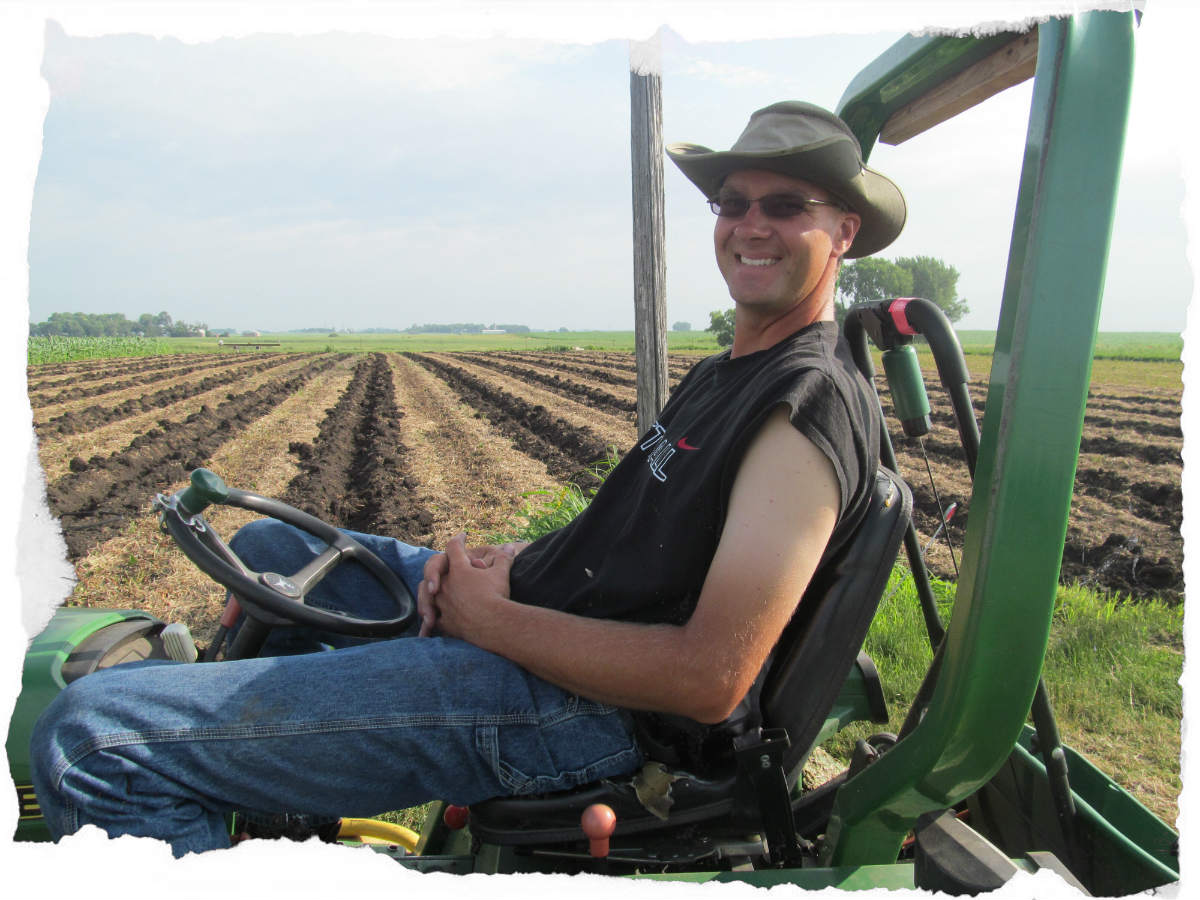The minute we shut down the 2015 strawberry harvest, the tractor roared to life, and we all raced to the fields to prep for the 2016 harvest. Coated with sweat and dust, Dan worked until after dark every night to renovate the plants.
First, he used the lawn mower attachment to mow off the tops of the plants.
Here’s a close-up of a mowed-off section. There are lots of strawberries that were not harvested. I try not to look at these and get depressed:) They will make good fertilizer….
Next, he tills between the rows to narrow them. The section on the left has been tilled, the section on the right has only been mown. Tilling kills a lot of the runners, and takes the plant down to just the mother. It sounds brutal, but if he doesn’t do it, we end up with a solid mass of plants, and our strawberries would be few and tiny.
After tilling, he sprinkles fertilizer, kind of like Miracle-Grow for strawberries, on the plants. He uses a grass seeder tied to the tractor with bungee cord. Whatever works, right?
The next step is to set up overhead irrigation over the whole field so that the fertilizer can be watered in.
These shorn plants are desperate for water!
Isn’t it neat how the irrigation pipes all connect? Kind of like K’Nex for grown-ups.
Seeing the strawberry field all mown, tilled, and irrigated, is beautiful. Next year’s crop will be determined by the amount of rain and sunshine we get this year in July and August. All the blossoms for next year must be set this summer – there’s no catch-up later.
While Dan was doing his tractor work, Sarah and the Brouwer children were frantically weeding the baby strawberry plants. I say frantically, because those doggone weeds were going to seed, and if they weren’t caught on time, the Brouwer family wouldn’t be able to go on vacation at all this summer! I think we got them…phew:)
You’d think Dan would help us weed, but no, he has to get the old strawberry plants out to make room for the cover crops. I think he just likes tractor work more than hand-weeding. First, he rips into the ground to get at the drip irrigation tape. Next, he…. well, he hasn’t had a chance to get to next yet, but I know we’ll need to yank, tug, pull, and (quite possibly swear, sshhh…) until all the tape is out of the ground. Sigh, it’s a lot of tugging. Then, he’ll till the field, and finally, plant some seed for some Hairy Vetch, or Sorghum Sudan grass, or something else interesting that he found out about on youtube that will do wonders for our soil biology and grow us really big strawberries. Like, strawberries the size of watermelons? Hmm, we’ll see about that.
Here’s a section of field that already has cover crop growing. Oats, in this case. In a few weeks it will be a few feet tall, if we get enough rain.
This is a baby oat plant. I like thinking about what it does for that hard, dry soil, and how it will help transform the soil into an active, black ecosystem, teeming with life that will promote better strawberry growth in the future.
In the meantime, the cows get to eat off our current covercrop, using their hooves to stomp around and activate the soil. Thankfully, the 2015 strawberry harvest is done, and the land in our crop rotation is now mowed, tilled, seeded and weeded, all getting ready for the 2016 harvest.
By the way, I’m so impressed that you read to end of this blog entry…thank-you for being interested in this behind-the-scenes peek into strawberry farming!


So interesting to read how you renovate and plan for the next crop, etc—one question–do you cover the plants with straw or something for the winter–if so, when do you do that and when do you remove the cover??? Love your berries!!!!!!! and so interested in the whole project!!!!!
Hi Geraldine, Thanks so much for your interest in the back story of our farm. It makes it worth taking the time to post:) We do cover with straw for the winter. The berries need a few inches on top to protect the flower buds. We cover when the plants have gone fully dormant, which is usually around the first week of November. If we could be certain of enough snow, we could do without the straw, but snow cover isn’t guaranteed. The straw is also great in the spring because if there is a warm spell in the early spring, the straw will keep the plants from breaking dormancy. We don’t want them to break dormancy and start flowering too early, like in March or early April, because then there would be a high chance that a late frost would kill off our crop. We remove the straw in April sometime when the soil temperature is at 40 degrees. Sarah